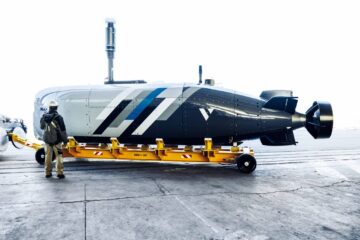Known as Herne, the military-capable technology demonstrator is planned to begin trials a year from now. Initial test, trials and payload integration will focus on intelligence, surveillance and reconnaissance (ISR) applications.
Navies are showing increased interest in the potential of highly autonomous and persistent XLAUVs to complement more expensive crewed assets in the underwater battlespace. Use cases include ISR, anti-submarine warfare surveillance, critical national infrastructure protection, and electronic warfare.
BAE Systems said that the self-funded Herne demonstrator project is intended to test high-level XLAUV autonomy developed by the company on one of Cellula Robotics’ Solus underwater vehicles. Trials are set to start in September 2024 from a facility on the south coast of England.

According to Scott Jamieson, managing director of Maritime Services at BAE Systems, testing of Herne XLAUV will represent the first time that any UK company has tested advanced autonomous capabilities in this area.
“My aim is to create a capability that is faster, more capable, more flexible, cheaper for customers to buy and provides navies with a way to protect critical national infrastructure,” he said.
Scott Jamieson, Managing Director of Maritime Services at BAE Systems
Cellula Robotics earlier this year began sea trials of its Solus-XR XLAUV off West Vancouver. The company plans to commence demonstration missions with this vehicle in 2024.
In addition, Cellula was in May this year chosen as one of 26 suppliers to be awarded a concept study contract for the UK’s Project CHARYBDIS Phase 1 project. Project CHARYBDIS is exploring technologies, techniques and solutions that could enable persistent deployable uncrewed ASW surveillance.
BAE Systems last year bid unsuccessfully for the UK’s Project CETUS XLAUV programme. Jamieson told Naval News that the company’s new partnership with Cellula Robotics was aimed to address a wider market, and so was not constrained by the specific needs of any single customer.






